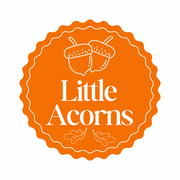
Guest blog: Play schemas and activity ideas
By Saskia @universitymum
Schemas are an important part of child development and as parents you have probably come across the term but, if you are not a practitioner or have not studied child development then you might not understand what they are or what schematic behaviour is.
This short introduction to schemas aims to be helpful to parents in identifying schemas in their child’s behaviours or play and may also give a little understanding of why our babies and small children do some of the things they do.
Firstly, it is very difficult to conjoin a definition for the term that can help to understand what they are, Jean Piaget conjoined this theory that very young children categorise knowledge they encounter in their brain, to learn. Athey (2011) explains that schemas are “patterns in behaviour and thinking in children.”
Essentially, schemas are repeated behaviours that babies, children and even adults do to master concepts, and process knew information we come by. Quite often, we as adults attach new information to categories of knowledge already stored in our brain, so we take a shortcut to problem solve, children also do this. For instance, a baby will suck/grasp/bang and repeat these actions until they fulfil their understanding of the way the object works/feels or what movement/action they are doing is mastered.
Schemas can be altered and modified and categorised into sections of our brain to shape an understanding of the world. To put it more simply, a baby or a young child will see a dog, they are told by their parents that what they have seen is a dog thus, the child may see fur, four legs, and a tail and associate this with what a dog is. So, when they see a cat and see the same properties, they may mistake it for a dog. Once the adult says it is not a dog it’s in fact a cat the child will check which properties differ and create a new schema for a cat. Sometimes cats look different and so when they encounter a different cat, they modify that schema they already have on what a cat is to form a better understanding.
Children also categorise the way they play with their environment and focus on particular schemas within their play which is why schemas should be identified in children, to provide materials and activities which support schematic behaviours. This table I have included may be helpful for you to identify which schemas your children are currently working on.
The second table may be helpful for what kind of resources or activities will help your child to master their current interests.


